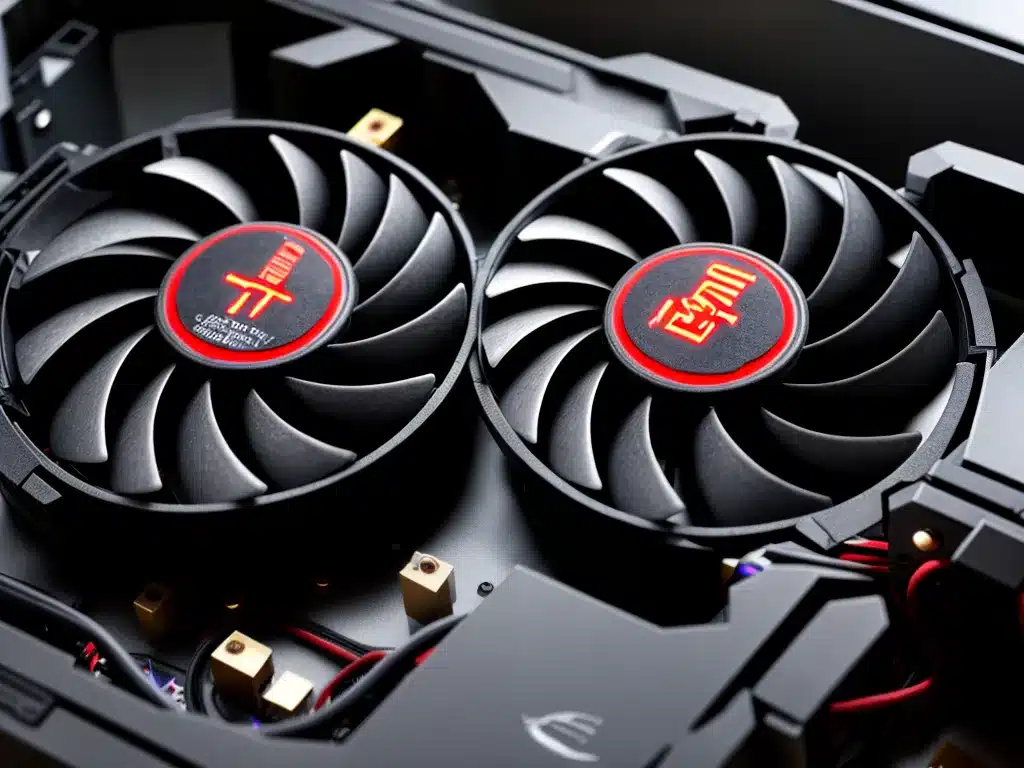
What is Undervolting a GPU?
Undervolting a GPU refers to lowering the voltage supplied to the graphics card while keeping the clock speed the same. This reduces the power consumption and heat output of the GPU with minimal impact on performance.
The GPU contains hundreds or thousands of small processors that switch on and off billions of times per second. Higher voltage allows them to switch faster, which increases performance. However, higher voltages also generate more heat.
Undervolting reduces the excess voltage that is not needed for maximum clock speeds. This allows the GPU to run at the same clocks and performance level, while requiring less power and running cooler.
Why Undervolt a GPU?
There are several benefits to undervolting your graphics card:
Reduced Power Consumption
Lowering the voltage can significantly reduce power draw. For example, a GPU running at 1V may only need 0.9V for stable operation at its rated clock speed. This 10% voltage reduction can lower power by 20-30%.
Less power usage means lower electricity bills and reduced load on the power supply.
Lower Temperatures
The reduced voltage leads to less heat being generated by the GPU. Temperatures can drop by 5-15°C depending on the specific model and voltage adjustment.
This improves stability, reduces fan noise, and decreases thermal throttle situations where the GPU downclocks due to overheating. It also extends the lifespan of the graphics card.
Quieter Operation
The lower temperature allows the GPU fans to spin slower while still maintaining safe thermals. This significantly reduces fan noise, allowing for quieter operation under load.
Increased Headroom for Overclocking
The drop in temperatures also provides additional thermal headroom for overclocking. The extra cooling capacity enables higher stable clock speeds.
Undervolting counteracts the increased temperatures from overclocking, allowing you to push clock speeds further.
No Loss in Performance
Because the clock speeds are unchanged, undervolting has minimal impact on FPS or benchmark scores. Most GPUs can operate at notably lower voltages with no performance penalty.
As long as voltage is sufficient for stable operation at the set clock speed, FPS will remain the same. This allows you to gain the benefits of lower power, heat, and noise while maintaining full graphics performance.
How to Undervolt Your GPU
Undervolting is done through GPU voltage control software provided by manufacturers like MSI Afterburner or EVGA Precision X1. The process involves gradually lowering voltage until instability occurs, then increasing slightly for safety.
Here are the detailed steps:
-
Download MSI Afterburner, Precision X1, or your GPU brand’s voltage control software.
-
Run a benchmark like Unigine Heaven at stock settings and note the scores.
-
In the voltage section of the software, lower GPU core voltage by -10mV increments.
-
Test stability by running the benchmark again. Lower by -10mV increments until scores drop or graphical artifacts appear.
-
Increase voltage by +5mV to +20mV for safety buffer. The final value is your stable undervolt.
-
Optional – Increase GPU clock speed until unstable, then increase voltage minimally until stable again. This maximizes undervolt performance.
-
Run final stability tests. If successful, apply settings and monitor temperatures/clocks under load.
It’s recommended to test for a few hours with games and benchmarks. If no crashes or visual issues occur, the undervolt is stable. Monitor temps and clocks in hardware monitoring software.
Undervolting Considerations
- Stability test extensively – crashes can occur over time if undervolt is too aggressive.
- Undervolt in small steps – large voltage drops increase chance of instability.
- Each GPU chip has different capabilities – some chips undervolt better than others.
- Insufficient voltage can cause performance issues before crashes occur.
- Undervolting too far degrades boost clocks before causing crashes.
- Set a safe temperature target – lower temps using undervolt to avoid thermal throttle.
Is Undervolting Safe?
When done properly, undervolting is safe and effective for reducing GPU power and heat. The key is incrementally lowering voltage and testing for stability to find the optimum undervolt level.
There is no risk of hardware damage from undervolting, even with aggressive undervolts that cause crashes or freezes during testing. The system simply becomes unstable and needs more voltage.
Undervolting just provides the minimum necessary voltage for stable operation at a given clock speed. This improves efficiency without pushing the GPU beyond safe operating conditions.
Summary – Undervolt for Cooler, Quieter GPU Performance
Undervolting your graphics card is a safe, easy way to reduce temperatures, noise, and power consumption with minimal impact on performance. Lower voltages generate less heat, allowing the GPU to run cooler at the same clocks.
Carefully test your specific GPU chip to find the maximum stable undervolt. This provides lower temperatures and power draw while avoiding instability. Undervolting maximizes efficiency, enabling you to reap the benefits of cooler, quieter GPU operation and lower electricity usage.












